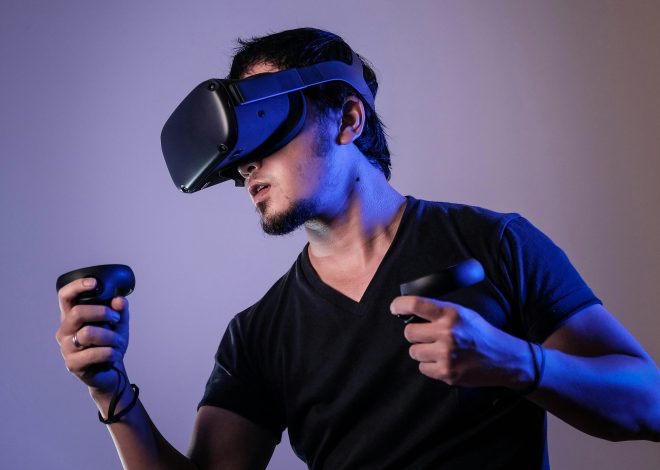What are some innovative VR shooting zone design concepts?
Introduction to VR Shooting Zones
Virtual reality is revolutionizing the way we experience entertainment, and VR shooting zones are at the forefront of this transformation. Imagine stepping into a world where every shot fired feels real and every scenario immerses you completely in a thrilling adventure. These innovative spaces not only provide adrenaline-pumping action but also create unique opportunities for players to engage with advanced technology.
As VR continues to evolve, so do the design concepts behind these shooting zones. What was once just about firing at targets has now expanded into intricate experiences that captivate users from start to finish. In this blog post, we’ll explore some cutting-edge VR shooting zone design concepts that elevate gameplay beyond traditional boundaries. Buckle up; it’s time to dive deep into the future of virtual marksmanship!
Benefits of VR Shooting Zones
VR shooting zones offer an exciting fusion of entertainment and training. Users can step into lifelike scenarios without any real-world risks. This creates a safe environment for practicing skills, whether it’s marksmanship or teamwork.
Another major benefit is accessibility. People from various backgrounds can engage in shooting simulations regardless of physical ability or prior experience.
Moreover, VR technology enhances engagement through immersive experiences. Players feel as if they are truly part of the action, heightening enjoyment and motivation.
The social aspect cannot be overlooked either. Friends can join forces or compete against each other, fostering camaraderie while having fun.
VR shooting zones can provide valuable analytics on user performance. This data helps players identify strengths and weaknesses, facilitating focused improvement in their skills.
Key Elements of an Innovative VR Shooting Zone
An innovative VR shooting zone captivates players with its design. It begins with spatial dynamics, creating an environment that feels vast and immersive. Utilizing 360-degree visuals, users can explore every corner of their surroundings.
Next is interactivity. Players should influence the environment through actions like shooting or interacting with objects. This engagement deepens immersion and makes each experience unique.
Sound design is equally crucial. Spatial audio enhances realism by providing directional cues that help players locate threats or allies within the game.
Moreover, adaptive difficulty levels challenge players according to their skill sets, ensuring everyone enjoys a tailored experience.
Seamless integration of technology ensures smooth gameplay without lag or glitches. When these elements combine effectively, they elevate the entire VR shooting experience beyond mere entertainment into something truly memorable.
Concept 1: Interactive and Immersive Environments
Interactive and immersive environments are at the heart of a compelling VR shooting zone. Imagine stepping into a lush jungle, where every leaf rustles with potential threats. Players can explore hidden paths or trigger unique events by interacting with their surroundings.
Lighting VR Shooting Zone Design Concepts plays a crucial role here. Dynamic changes in illumination can heighten tension during gameplay, making each encounter feel more intense. Sound design complements this experience; ambient noises draw players deeper into the scene.
Incorporating elements like destructible environments adds another layer of excitement. A well-placed shot could send debris flying, altering the landscape and strategy on the fly.
Furthermore, rich narratives woven into these settings engage players emotionally, encouraging them to invest in their mission. Each environment should be more than just a backdrop; it must be an integral part of the adventure that responds to player actions and choices throughout the game session.
Concept 2: Dynamic Scenarios and Challenges
Dynamic scenarios and challenges are at the heart of an engaging VR shooting zone. They keep players on their toes, transforming each session into a unique experience.
Imagine entering a scenario where enemies adapt to your strategies in real-time. This level of interaction creates a thrilling atmosphere that compels players to think quickly and act decisively.
Incorporating environmental changes adds another layer of excitement. One moment you could be under clear skies, while the next brings rain or fog, altering visibility and tactics dramatically.
Challenges can range from time-limited missions to stealth-based objectives. Such variety ensures that even seasoned players find something new and exciting with every visit.
By continuously updating scenarios based on player feedback, designers can maintain high engagement levels. The focus should always be on creating memorable moments that leave participants eager for their next adventure.
Concept 3: Customizable Weapons and Gear
Customizable weapons and gear add a thrilling layer to the VR shooting zone experience. Players can tailor their arsenal to fit personal preferences or specific missions. This feature transforms gameplay, making every session unique.
Imagine selecting different weapon types, adjusting scopes, grips, or even ammunition types. Each VR Shooting Area modification could impact performance, encouraging players to experiment with various combinations.
Gear customization extends beyond weapons too. From tactical vests that enhance speed to futuristic helmets equipped with augmented reality displays, options abound for personalization.
This level of individualization not only enhances player engagement but also fosters deeper connections with the game environment. As users forge their identities through custom choices, they become more invested in the virtual world around them.
Such elements amplify excitement and immersion while promoting strategic thinking during gameplay—a combination that keeps players coming back for more action-packed adventures.
Concept 4: Multiplayer Options
Multiplayer options can take VR shooting zones to the next level. The thrill of competing against friends or strangers adds an exciting dynamic. Players can engage in team-based missions or free-for-all matches, creating a vibrant atmosphere.
Imagine tactical gameplay where communication and strategy are key. Teams could coordinate attacks, cover fire, and flanking maneuvers, enhancing realism. This social aspect fosters camaraderie among players who share experiences in immersive environments.
Moreover, leaderboards and achievements keep the competitive spirit alive. Gamers thrive on recognition for their skills and accomplishments within these virtual realms.
Incorporating voice chat features allows teams to strategize effectively while immersed in action. As players communicate dynamically, it mirrors real-life interactions during high-stakes situations.
With innovative multiplayer options, VR shooting zones become more than just games—they transform into thrilling communal experiences that leave lasting memories.
Concept 5: Realistic Feedback Systems
Realistic feedback systems are a game changer in VR shooting zone design concepts. They elevate the player’s experience by simulating real-world sensations.
Imagine feeling the kick of a weapon or the heat from an explosion. Haptic technology can achieve this, creating immersive moments that draw players deeper into the action.
Sound also plays a crucial role. Incorporating directional audio helps users pinpoint targets and enhances situational awareness. The blend of sound and tactile responses makes each encounter feel lifelike.
Moreover, incorporating environmental feedback, like wind effects or terrain vibrations, adds another layer of realism. Players become more engaged when they sense their surroundings reacting to their actions.
A well-designed feedback system transforms gaming into an adrenaline-pumping experience that keeps players coming back for more excitement and challenges.
Conclusion
The future of VR shooting zone design concepts is bright and brimming with potential. As technology continues to advance, these spaces can evolve into even more engaging experiences. By focusing on interactive environments, dynamic scenarios, customizable gear, multiplayer options, and realistic feedback systems, developers can create truly immersive adventures that captivate users.
As the popularity of virtual reality grows among gamers and enthusiasts alike, innovative designs will undoubtedly play a pivotal role in shaping the landscape of entertainment. Embracing creativity while prioritizing user experience will be key for anyone looking to make their mark in this exciting field. The possibilities are endless—let your imagination run wild as you explore what’s next for VR shooting zones!

